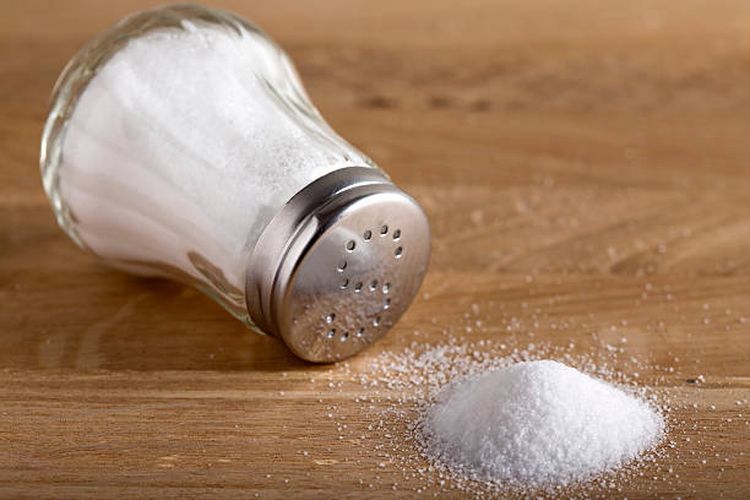KOMPAS.com – Salt is a mineral that consists mostly of sodium chloride. Salt is one of the simplest and most important ingredients in the world.
However, increased consumption of processed foods has led to increased salt intake which has an impact on health.
Problems that salt can cause
Although efforts have been made to reduce salt consumption in the last decade, the average adult still consumes a third more than the recommendation, namely 6 grams per day (lower for children).
The recommended amount for daily salt consumption is apparently very small, namely the equivalent of one teaspoon per day.
Also read: Tips for choosing the healthiest salt for cooking
Excessive salt consumption can cause hypertension or high blood pressure, which is the main cause of stroke and heart disease.
Although there are people who do not appear to experience any ill effects from high salt consumption, research shows that many individuals are genetically more susceptible to the effects of salt in their diet.
High blood pressure forces the heart to work harder, creating additional pressure on the arteries that can damage blood vessels as well as organs such as the heart, kidneys, brain and eyes.
Unfortunately, most people don’t realize they have high blood pressure, which affects many people.
How to find out the salt content in packaged food
Currently, all food labels are required to include the salt content, which makes it easier for us to understand the amount of salt in the product.
Check food labels:
- More than 1.5 grams per 100 grams: Product is high in salt
- Between 1.5 to 0.3 grams per 100 grams: Medium salt product
- Less than or equal to 0.3 grams per 100 grams: Low salt product
Tips for reducing salt consumption
Gradually reducing salt in your diet is the best way to get used to living with a lower intake. Here are some steps you can take:
- Avoid adding salt when cooking and try tasting food before adding spices.
- Use seasonings like pepper, garlic, herbs, and lemon juice to add flavor.
- Enjoy the natural taste of food without salt. In a few weeks, your tongue will adjust.
- Use low-sodium salt substitutes.
- Read food labels carefully for salt content and learn to recognize ingredients that contain sodium, such as soy sauce, brine, monosodium glutamate, and baking soda.
- Avoid foods with labels such as grilled, salted, smoked, or marinated because they tend to be high in salt.
- Reduce consumption of processed foods that contain high salt.
 Dangers of excessive salt consumption
Dangers of excessive salt consumptionAlternative to salt
Salt replacement products must, by law, contain 30 percent less salt than standard products.
However, because these alternatives still taste salty, they may not help you adjust your taste buds to less salty foods.
Also read: Recipe for Garam Masala, a typical Indian cooking spice
Sodium is an important electrolyte that plays a role in maintaining fluid balance and blood volume and helps nerve and muscle function.
Sodium deficiency can cause a condition called hyponatremia, with symptoms such as headaches, seizures, coma and even death.
Older people, especially those taking certain medications, as well as athletes who often over-hydrate their bodies, are more at risk of experiencing this condition.
Also read: Sea Salt vs Table Salt, Which is Healthy?
Therefore, if you have a medical condition that requires a low-salt diet or have been advised by a doctor or nutritionist to limit your salt intake, you should continue this practice.
However, if you are healthy, do not have high blood pressure, and cook most of your meals from scratch with minimal consumption of packaged or processed foods, you may not need to change your salt intake at this time.
Listen breaking news And selected news we’re right on your phone. Choose your favorite news channel to access Kompas.com WhatsApp Channel: https://www.whatsapp.com/channel/0029VaFPbedBPzjZrk13HO3D. Make sure you have installed the WhatsApp application.






